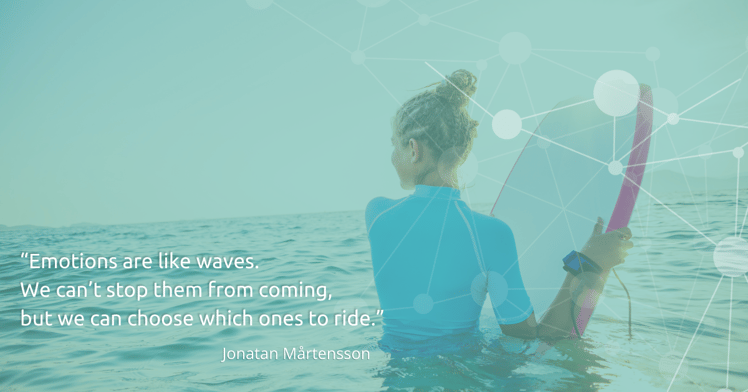

Life is full of ups and downs. But learning to recognize, regulate, and manage our emotional responses to different challenges is an essential life skill that is worthwhile to practice and master. What we’re talking about here is social emotional learning (also abbreviated as SEL).
According to the Collaborative for Academic, Social, and Emotional Learning (CASEL), social emotional learning is defined as a set of skills that supports the whole learner: from mental wellbeing and a growth mindset to healthy relationship building and responsible decision making.
Within the SEL framework, there are five key areas that support the development of these skills:
A growing body of evidence suggests that SEL programs improve academic performance. However, the value of SEL extends beyond these metrics. A 2021 report released by the Early Intervention Foundation found that SEL interventions also “enhance young people’s social and emotional skills and reduce symptoms of depression and anxiety in the short term.”
From a classroom perspective, SEL lays the foundation for a positive academic environment, promoting group harmony, learning, and collaboration.
Each class culture is made up of its own unique combination of student backgrounds, ideas, and viewpoints. As students are exposed to new ways of thinking, it's understandable for them to express themselves when their worldview is challenged. By incorporating an SEL-focused curriculum in everyday instruction, students will be able to practice managing these experiences while showing kindness and empathy to their peers.
A lot. Mathematics is one of those fields that is intensely collaborative. It might seem counterintuitive because most math activities today give students the idea that math is done individually. But when we really look at it, effective problem-solving often involves the input and expertise of multiple collaborators. When students work together towards finding a solution, interpersonal skills become increasingly important.
Students with experience applying SEL practices will be better positioned to confidently share their reasoning as well as respectfully critique the work of their peers without diminishing any goodwill or rapport built over time.
In a previous blog post about social emotional learning research and distance learning applications, Calli Wright referenced a recent study that shows how math can be connected to self-beliefs. The study found that students who use the ST Math program have higher mathematics self-beliefs than non-ST Math students (Rutherford, 2019). Helping students redefine their relationship with math to see themselves as capable problem solvers is why ST Math is such an effective instructional tool.
One of the many ways ST Math educators can accelerate this mindset shift is through teacher-led, group discussions referred to as Puzzle Talks. These step-by-step deep-dives break problems down into simpler, smaller steps, removing any intimidating factors that might cause a student to get discouraged.
Teaching social and emotional learning skills at an early age helps children develop the emotional intelligence and “soft skills” needed to succeed beyond school. While each state has different SEL standards for each grade, the core competencies of SEL can be embedded into any subject area and taught in a variety of learning formats.
For example, teachers can start and end each class period by checking in with their students. After everyone is settled in, give them a few minutes to write down how they're feeling or their goals for the day. Then, encourage them to share with a partner or in small groups to teach them how to communicate in a group setting effectively. Please read this article from We are Teachers for more inspiration on integrating SEL activities throughout the day.

Parker Erickson was MIND’s Content and Community Specialist. As a digital storyteller, Parker is passionate about building strong communities through technology and social media. Off the clock, you can find him buried in the latest issue of The New Yorker or experiencing different cultures through food.
Comment